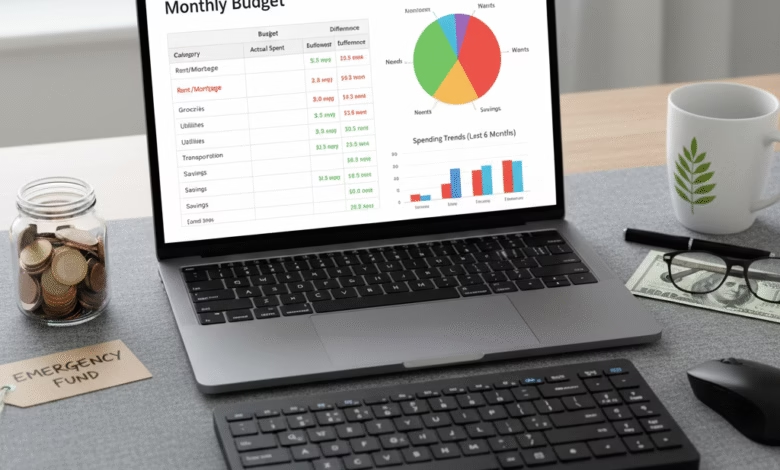How to Read a Stock Quote (Like a Pro)
Learn how to analyze a company's stock with this guide

Stepping into the world of investing can feel like learning a new language. At the heart of this language is the stock quote, a compact yet data-rich snapshot of a company’s performance in the market. To the untrained eye, it’s a dizzying array of numbers, symbols, and acronyms. But to the informed investor, it’s a powerful tool that tells a compelling story about a company’s current valuation, historical performance, and investor sentiment.
This guide is designed to demystify the stock quote completely. We will break down every component, from the absolute basics to the more nuanced metrics used by seasoned professionals. By the end of this article, you will not only understand what each number means but also how to use this information to make smarter, more confident investment decisions.
First Things First: What is a Stock Ticker Symbol?

Before you can analyze a stock, you need to be able to find it. This is where the ticker symbol comes in.
A ticker symbol is a unique combination of letters used to identify a publicly traded company on a specific stock exchange. It’s the universal shorthand for a company in the financial world. For instance:
- AAPL: Apple Inc.
- GOOGL: Alphabet Inc. (Google’s parent company)
- TSLA: Tesla, Inc.
- AMZN: Amazon.com, Inc.
You’ll notice a pattern in the length of these symbols, which often corresponds to the exchange they trade on in the United States:
- 1-3 Letters (e.g., F for Ford, KO for Coca-Cola): These companies are typically listed on the New York Stock Exchange (NYSE).
- 4-5 Letters (e.g., MSFT for Microsoft, NVDA for Nvidia): These companies are usually found on the Nasdaq exchange. A fifth letter in a Nasdaq ticker often signifies a specific class of stock or a different type of security.
Understanding the ticker is your first step. It’s the key you use to unlock all the financial data associated with that company.
Price and Performance: How is the Stock Trading Today?
The most prominent numbers in a stock quote detail its current price and how it has changed recently. This is the pulse of the stock for the current trading day.
Last Price (or Market Price)
This is the price at which the most recent trade for the stock was executed. It is the most up-to-date valuation of a single share. Financial news sites and brokerage platforms update this price in real-time throughout the trading day (typically 9:30 AM to 4:00 PM Eastern Time for U.S. markets).
Change and % Change
This crucial piece of data tells you how much the stock’s price has moved since the previous day’s closing price. It’s displayed in two ways:
- Change: The raw dollar amount the price has gone up or down.
- % Change: The percentage representation of that price movement.
For example, if a stock quote shows +$2.50 (+1.25%), it means the stock is currently trading $2.50 higher than its last closing price, which is a 1.25% increase. This information is almost always color-coded: green for a price increase and red for a decrease.
Previous Close
The “Previous Close” is the stock’s price at the end of the previous trading day. The “Change” is calculated from this number.
Open Price
This is the price at which the first trade of the current day was made. Comparing the open price to the previous close can tell you if investor sentiment was positive or negative overnight. A “gap up” occurs when a stock opens significantly higher than its previous close, often due to positive news released after market hours.
Understanding Market Dynamics: The Bid-Ask Spread Explained

The stock market is a dynamic auction, with buyers and sellers constantly negotiating prices. The bid and ask prices represent the two sides of this negotiation.
Bid Price and Bid Size
The Bid Price is the highest price a potential buyer is currently willing to pay for one share of the stock. The Bid Size tells you how many shares buyers are looking to purchase at that price (often shown in lots of 100). If you want to sell your shares immediately, the bid price is what you would likely get.
Ask Price and Ask Size
The Ask Price (also called the “offer price”) is the lowest price a current shareholder is willing to accept to sell their shares. The Ask Size shows how many shares are being offered for sale at that price. If you want to buy shares immediately, you will likely pay the ask price.
The Bid-Ask Spread
The difference between the bid and ask price is called the spread. For highly traded, popular stocks (like Apple or Microsoft), the spread is often just a penny. This indicates high liquidity, meaning it’s easy to buy or sell the stock quickly without significantly affecting its price. A wider spread suggests lower liquidity, which can be a sign of a less-traded or more volatile stock.
Gauging Volatility: A Look at a Stock’s Trading Range
A stock’s price is rarely static. Understanding its range of movement, both in the short and long term, is key to assessing its volatility and historical performance.
Day’s Range
This shows the highest and lowest prices the stock has reached during the current trading day. A wide day’s range indicates significant intraday volatility, which might be exciting for a day trader but could be a sign of risk for a long-term investor.
52-Week Range
This is one of the most important data points in a quote. It shows the highest and lowest prices the stock has traded at over the past year. The 52-week range provides critical context:
- Is the stock currently trading near its 52-week high? This could suggest strong positive momentum or that the stock is becoming overvalued.
- Is it trading near its 52-week low? This might indicate underlying problems with the company or a potential buying opportunity for value investors.
By seeing where the current price falls within this year-long range, you get a much better perspective than just looking at a single day’s performance.
Measuring Investor Interest: Why Trading Volume Matters

Volume is the total number of shares that have been traded during a given period, usually the current day. It is a powerful indicator of investor interest and the conviction behind a price move.
- High Volume: A significant price increase on high volume is a strong bullish signal, suggesting widespread investor enthusiasm. Conversely, a sharp price drop on high volume is a strong bearish signal, indicating many investors are rushing to sell.
- Low Volume: Price movements on low volume are less significant. They may not reflect the broader market sentiment and could be easily reversed.
Many investors also look at the Average Volume (often calculated over the past 30 or 90 days) to determine if the current day’s volume is unusually high or low, which can signal a noteworthy event or shift in interest.
Valuation Metrics: How to Determine a Company’s Size and Worth
Now we move beyond daily trading data and into the metrics that help you assess a company’s fundamental value.
Market Capitalization (Market Cap)
Market cap is the total dollar value of all of a company’s outstanding shares. It’s calculated by multiplying the current stock price by the total number of shares. It is the primary way to measure a company’s size:
- Large-Cap: $10 billion and up (e.g., Coca-Cola, Johnson & Johnson). Generally seen as stable, established leaders.
- Mid-Cap: $2 billion to $10 billion. A blend of the stability of large-caps and the growth potential of small-caps.
- Small-Cap: $300 million to $2 billion. Higher growth potential but also come with greater risk and volatility.
Earnings Per Share (EPS)
EPS is a company’s total profit divided by its number of outstanding shares. It is a direct measure of profitability on a per-share basis. A higher EPS indicates a more profitable company. You’ll often see EPS (TTM), which stands for “Trailing Twelve Months,” meaning it’s based on the actual earnings from the last four quarters.
Price-to-Earnings (P/E) Ratio
The P/E ratio is perhaps the most famous valuation metric. It is calculated by dividing the current stock price by its earnings per share (EPS).
P/E Ratio = Stock Price / Earnings Per Share
This ratio tells you how much investors are willing to pay for every $1 of the company’s earnings.
- A high P/E ratio might suggest that investors expect strong future growth (common in the tech sector). It could also mean the stock is overvalued.
- A low P/E ratio could indicate the stock is undervalued or that the company faces challenges.
It’s crucial to compare a company’s P/E ratio to its industry peers and its own historical average. A P/E of 15 might be high for a utility company but very low for a software company.
Shareholder Rewards: Understanding Dividends and Yield

Some companies choose to distribute a portion of their profits directly to their shareholders in the form of dividends.
Dividend Per Share
This is the total annual dividend payment expected per share. It is often paid out quarterly. For example, a company might have an annual dividend of $2.00, meaning it pays $0.50 per share each quarter.
Dividend Yield
The dividend yield expresses the annual dividend as a percentage of the current stock price.
Dividend Yield = Annual Dividend Per Share / Current Stock Price
For example, if a stock trades at $100 and pays an annual dividend of $2.00, its dividend yield is 2%. The yield is a useful way for income-focused investors to compare the return they can expect from different dividend-paying stocks.
Ex-Dividend Date
This is a critical date for dividend investors. It is the cutoff day for owning a stock to be eligible to receive the upcoming dividend payment. You must own the stock before the ex-dividend date to get the dividend.
Putting It All Together: Reading a Sample Quote
Let’s look at a fictional company, “Global Tech Innovations (GTI),” and analyze its quote:
- Ticker: GTI
- Last Price: $152.50
- Change: +$1.75 (+1.16%)
- Previous Close: $150.75
- Open: $151.00
- Bid: $152.48 x 500
- Ask: $152.51 x 300
- Day’s Range: $150.80 – $153.00
- 52-Week Range: $110.25 – $160.00
- Volume: 8,500,000
- Avg. Volume: 6,200,000
- Market Cap: $457.5B
- EPS (TTM): $7.62
- P/E Ratio: 20.01
- Dividend (Yield): $3.00 (1.97%)
- Ex-Div Date: Sept 15, 2025
Analysis:
- Performance: GTI is having a good day, up $1.75.
- Liquidity: The bid-ask spread is only 3 cents, indicating it’s a very liquid stock.
- Volatility & Context: The stock is trading near the top of its daily range and its 52-week high, suggesting strong bullish momentum.
- Investor Interest: Today’s volume is significantly higher than its average, confirming strong interest in the stock.
- Valuation: As a large-cap company ($457.5B), it’s a major player. Its P/E of 20 seems reasonable, but we’d need to compare it to its competitors.
- Income: It pays a decent dividend with a nearly 2% yield.
By systematically going through each data point, you’ve moved from seeing a block of numbers to understanding a detailed story about the company’s market performance and valuation. This is the foundation of making informed investment decisions.





